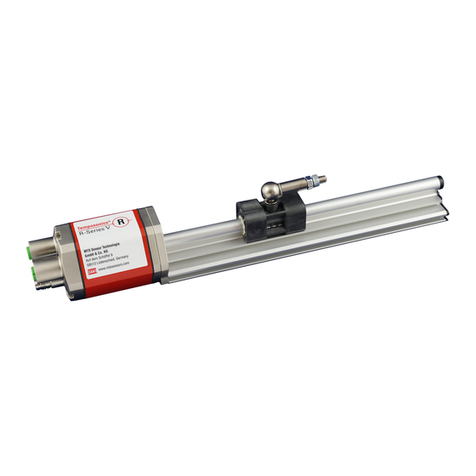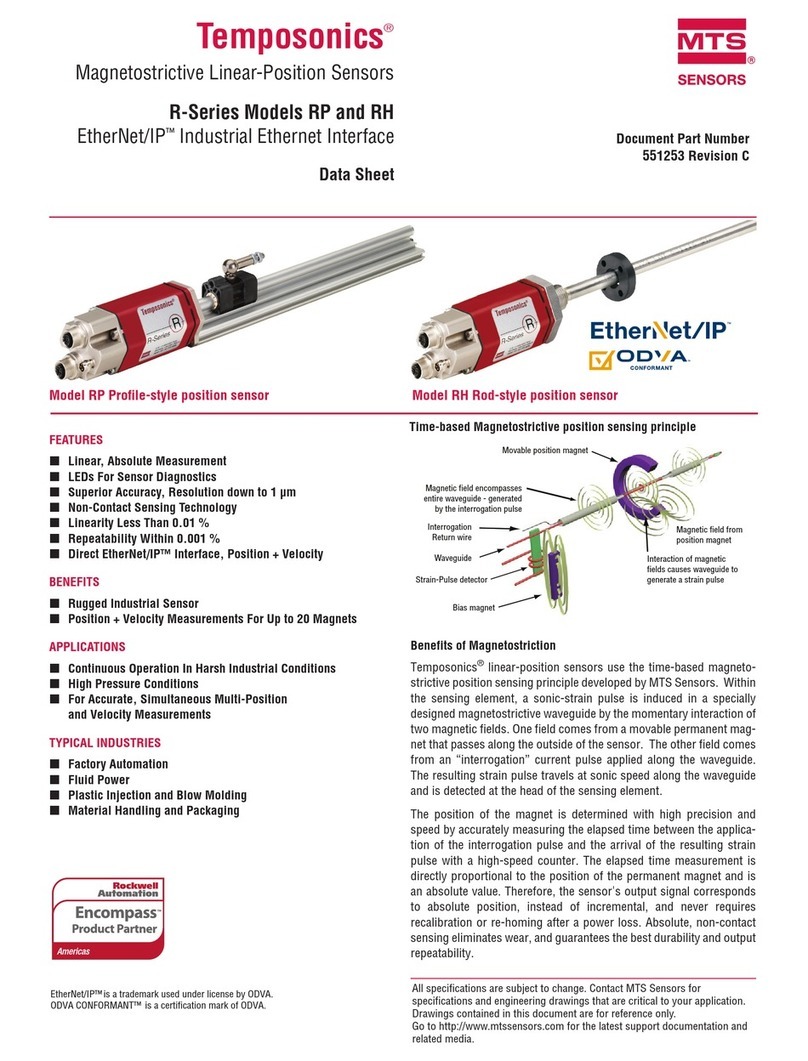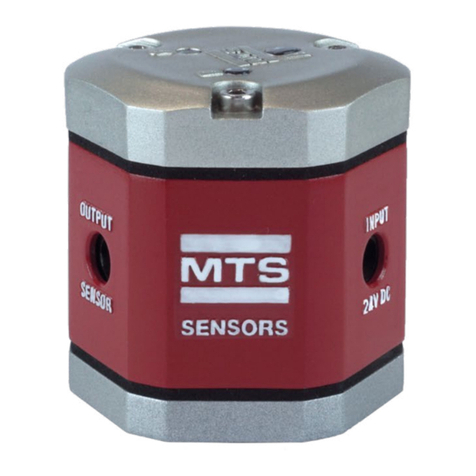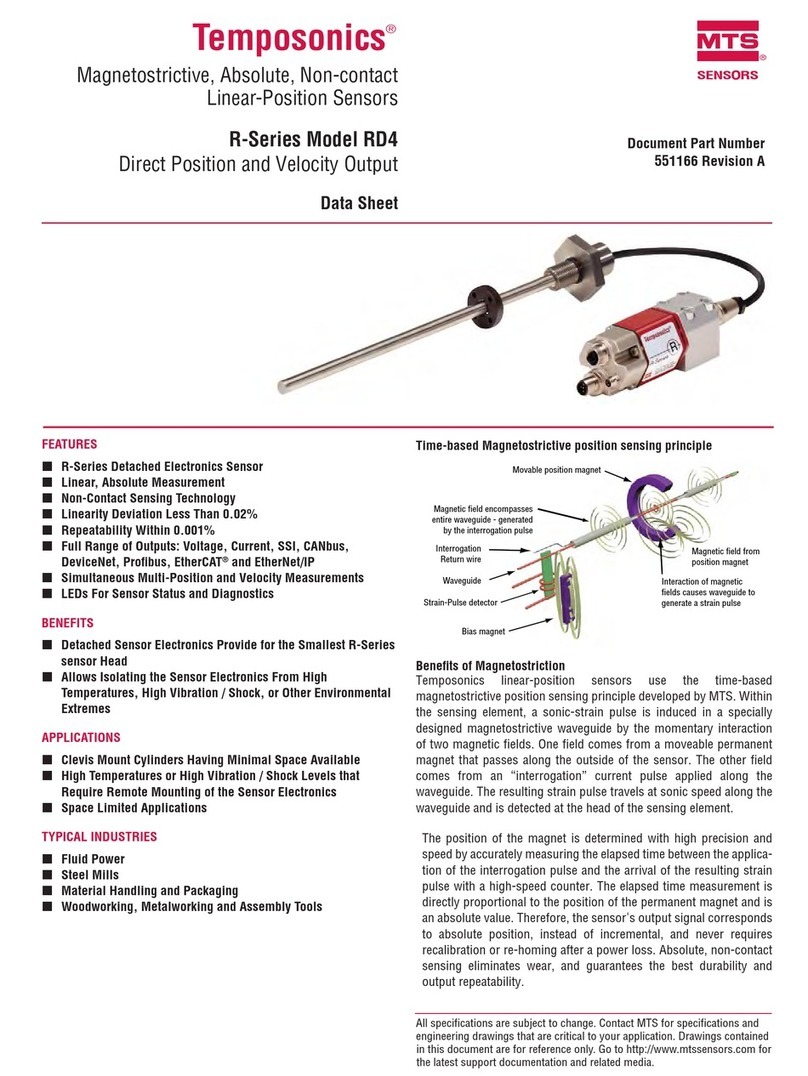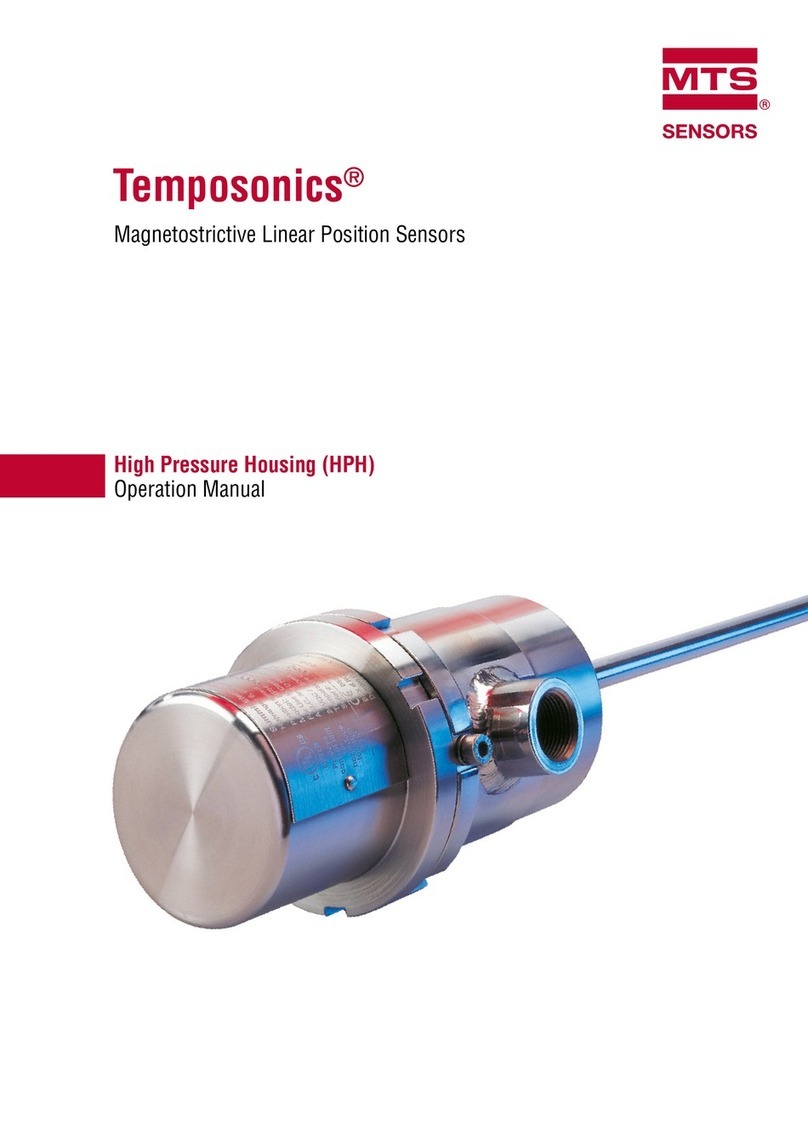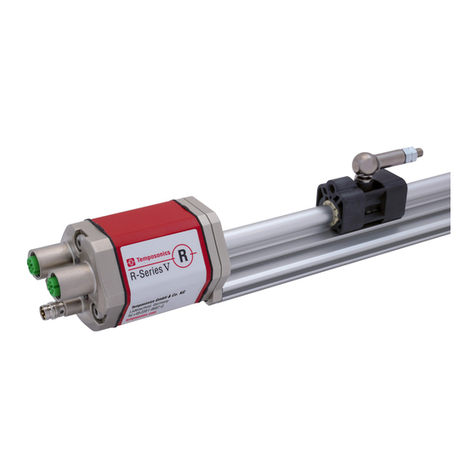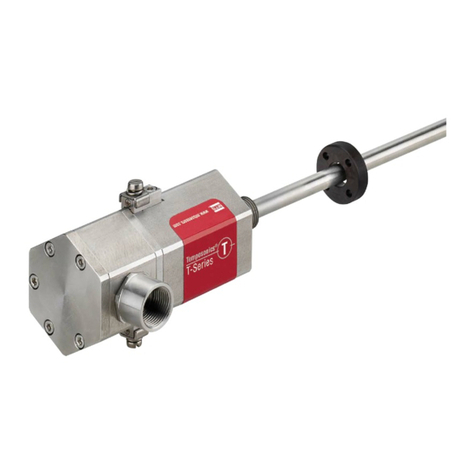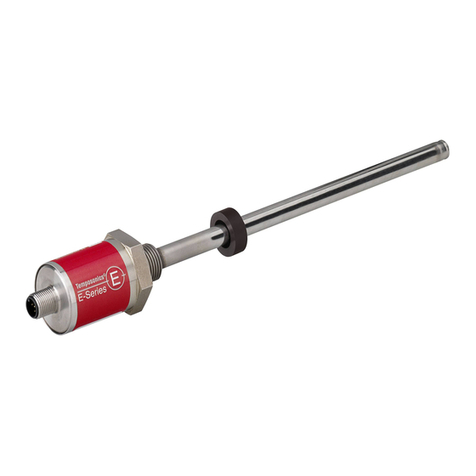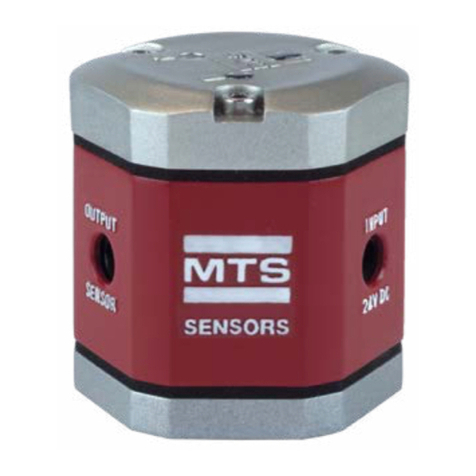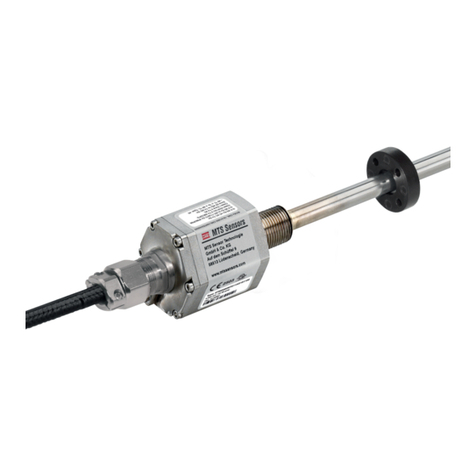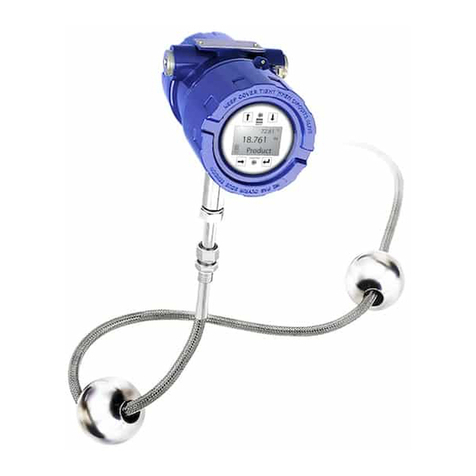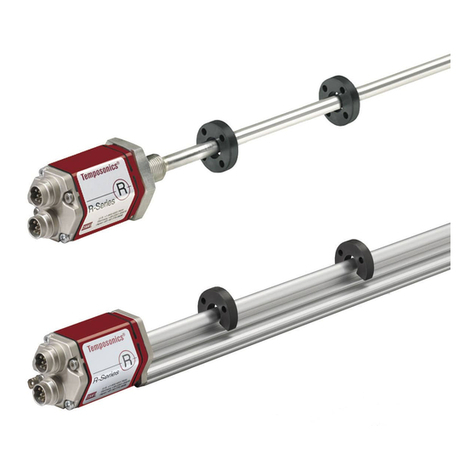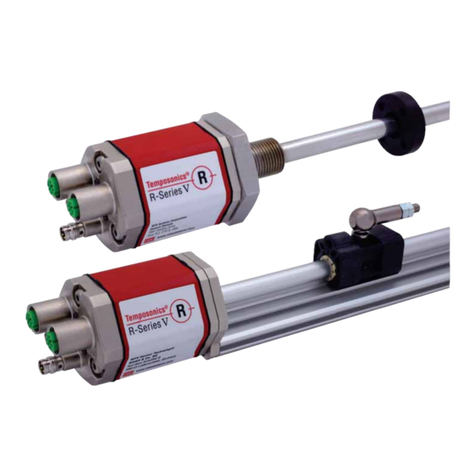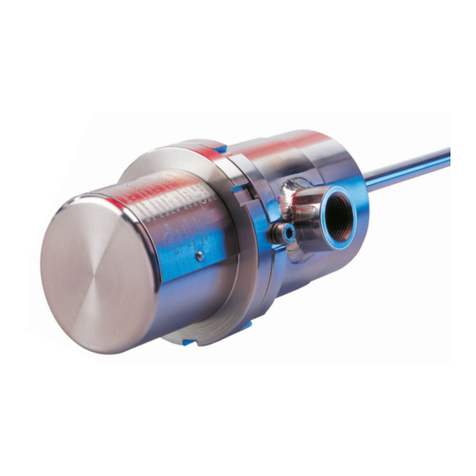
4
Temposonics®GTE Analog ATEX / NEC / CEC
Operation Manual
Do not step on the sensor.
The sensor might be damaged.
Do not alter the sensor afterwards.
The sensor might be damaged.
2.3 Installation, commissioning and operation
The position sensor is an electrical apparatus for use in Zone 2 (ATEX/
IECEx), Class I/II/III Div. 2 and Zone 2 and Zone 22 (NEC/CEC) and
must be used only in technically safe condition. To maintain this
condition and to ensure safe operation, installation, connection and
service, work may be performed only by qualied technical personnel,
according to IEC 60079-14 and local regulations.
If danger of injury to persons or of damage to operating equipment
is caused by sensor failure or malfunction, additional safety measures
such as plausibility checks, limit switches, EMERGENCY STOP
systems, protective devices etc. are required. In the event of trouble,
shut down the sensor and protect it against accidental operation.
2.3.1 Safety instructions for commissioning
To maintain the sensor’s operability, it is mandatory to follow the
instructions given below.
1. Follow the specifications given in the technical data.
2. Ensure that equipment and associated components used in a
hazardous environment are selected and installed in compliance
with regulations governing the geographical location and facility.
Only install equipment that complies with the types of protection
relevant to the applicable Classes, Zones, Divisions and Groups.
3. In explosive atmospheres use only such auxiliary components
that meet all requirements of the local and national standards.
4. The potential equalisation of the system has to be established
according to the regulations of erection applicable in the
respective country of use (VDE 0100 part 540; IEC 364-5-54).
5. Sensors from MTS Sensors are approved only for the intended
use in industrial environments (see chapter “2.1 Intended use”
on page 3). Contact the manufacturer for advice if aggressive
substances are present in the sensor environment.
6. Measures for lightning protection have to be taken by the user.
7. The user is responsible for the mechanical protection of the
sensor.
8. The sensor may be used only for fixed installations with
permanently wired cables. The user shall ensure that cables and
cable glands correspond to the risk assessment of the hazardous
application as well as to thermic, chemical and mechanical
environmental conditions. The user is also responsible for the
required strain relief. When selecting the sealing, the maximum
thermal load of the cables must be taken into account.
9. The user is responsible for meeting all safety conditions as
outlined by:
• Installation instructions
• Local prevailing standards and regulations
10. Any parts of the equipment which got stuck (e.g. by frost or
corrosion) may not be removed by force if potentially
explosive atmosphere is present.
11. The surface temperatures of equipment parts must be kept
clearly below the ignition temperature of the foreseeable air/
dust mixtures in order to prevent the ignition of suspended
dust.
2.3.2 How to ensure safe commissioning
1. Protect the sensor against mechanical damage during
installation and operation.
2. Do not use damaged products and secure them against uninten-
tional commissioning. Mark damaged products as being
defective.
3. Do not open or disassemble the sensor.
4. Do not open whilst energised.
5. Do not open when an explosive atmosphere is present.
6. The clamping test of the cable entry was carried out with a
reduced value, so it has to be ensured that pulling and twisting of
the cable is not transmitted to the terminations.
7. The mechanical protection of the sensor has to be provided by the
cylinder in which the sensor is embedded.
8. Prevent electrostatic charges.
9. Do not use the sensor in cathodic systems for corrosion
protection. Do not allow parasitic currents on the sensor housing.
10. Switch off the supply voltage prior to disconnecting or
connecting the connectors.
11. Connect the sensor very carefully and pay attention to the
polarity of connections, power supply as well as to the shape
and duration of control pulses.
12. Cable entry temperature and branching point temperature may
reach +75 °C (+167 °F) for power option 1. Select suitable cable
and entry device.
13. For field wiring, use cables suitable for the service temperature
range of –20 °C (–4 °F) to +75 °C (+167 °F).
14. Use only approved power supplies of Category II according
to IEC 61010-1.
15. Ensure that the specified permissible limit values of the sensor
for operating voltage, environmental conditions, etc. are met.
